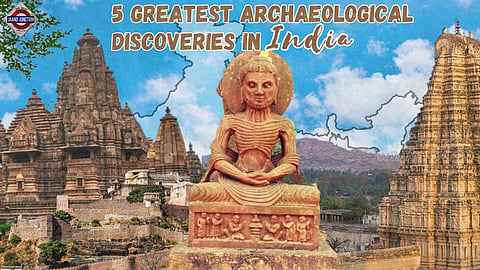

Many of the world's archaeological treasures are in India. India boasts more than a thousand archaeological monuments, many of which are open to visitors and tourists, including old forts and some of the world's oldest institutions. Several cultures have flourished in the area since antiquity as a result of the region's constant conquest by different rulers and kingdoms. Different technological and architectural advancements have been brought to the area by each of these cultures.
One of the biggest hilltop forts in the world, Kumbhalgarh Fort is one of the six breath-taking Rajasthani Hill Forts that have been inscribed on the UNESCO World Heritage List. The Sisodia Rajputs, a Rajput clan, were in-charge of Kumbhalgarh. When it became the capital of the Kingdom of Mewar in the 15th century AD, King Rana Kumbha, after whom the fort is named, lay the foundation of this magnificent fort. The Sisodia Rajputs lived in Kumbhalgarh until Mewar's headquarters relocated to the more advantageous city of Udaipur.
The fort was constructed in a distinct Hindu Rajput architectural style while also incorporating Persian architectural elements. The remarkable walls, which are the second-longest ancient wall in the world after the Great Wall of China, are thick enough to allow eight horses to walk alongside one another on the top and wrap around a hilltop that is roughly 1,100 metres above sea level. More than 360 Jain and Hindu temples can be found inside these walls.
The Khajuraho group of monuments is located in the town of Khajuraho, more precisely in the Chhatarpur district in the Indian state of Madhya Pradesh. The Chandela Rajput dynasty constructed different temples in the 10th and 11th centuries. The majority of the temples are devoted to Jain deities or Hindu gods.
Around 85 temples used to be dispersed over a region of around 20 km, The unusual architectural style and the ornately carved sculptures and figurines that adorn the temples of Khajuraho are the primary reasons for their fame. The most well-known of them are those that feature sensual artwork related to the Hindu ritual of Kama. The percentage of sculptures at Khajuraho that are sexual arts is about 10%. The remaining 90% of the sculptures depict individuals going about their daily lives and various Hindu cultural ideals.
One of India's oldest institutions of higher learning, Nalanda is also a historic Buddhist monastery. It may be found in Bihar, an Indian state that was once home to the Magadha kingdom. The Gupta and Pala Empires constructed the university, which flourished as a significant hub of learning between the fifth and the thirteenth centuries before being destroyed by the Mamluk Dynasty.
The Jain Tirthankaras, Lord Mahavira, and Gautama Buddha are all reported to have travelled to the village of Nalanda, which served as a significant trading hub in the ancient city of Magadha.
The historic ruins of Vijaynagar, which formerly served as the seat of the ancient Indian Vijaynagar Empire, may be found in Hampi. It is well-known for both the incredibly magnificent Virupaksha Temple and the extensive archaeology of the once-prosperous city of the long-since vanished monarchy. Between the 14th through the 16th century, the Vijaynagar Kings used the Hindu temple city of Hampi as a significant stronghold.
The site also has a number of civic buildings and structures, in addition to the temples, including the Zanana Enclosures, Elephant Stables, The King's Balance, canals and aqueducts, and Lotus Mahal. Several archaeological discoveries from the site are now on show in the Kamalapura archaeological museum. It is unknown where the communities at the location first appeared.
Puphagiri, another Buddhist study facility, wasn't found until a roving professor came across it in 1995. Since then, the ASI has undertaken a significant conservation and excavation operation that has allowed for the restoration of some of the ruins and the recovery of several historical relics. Given that many of Ashoka's statues have been found at the site and since the ruins encompass more than half a kilometre, it is plausible that Ashoka ordered the project.
The Puphagiri may surpass Nalanda as the biggest Buddhist institution in India, given just a small portion of the remains have been rebuilt or uncovered thus far. The ASI intends to transform it after restoration into one of India's top tourism destinations.
